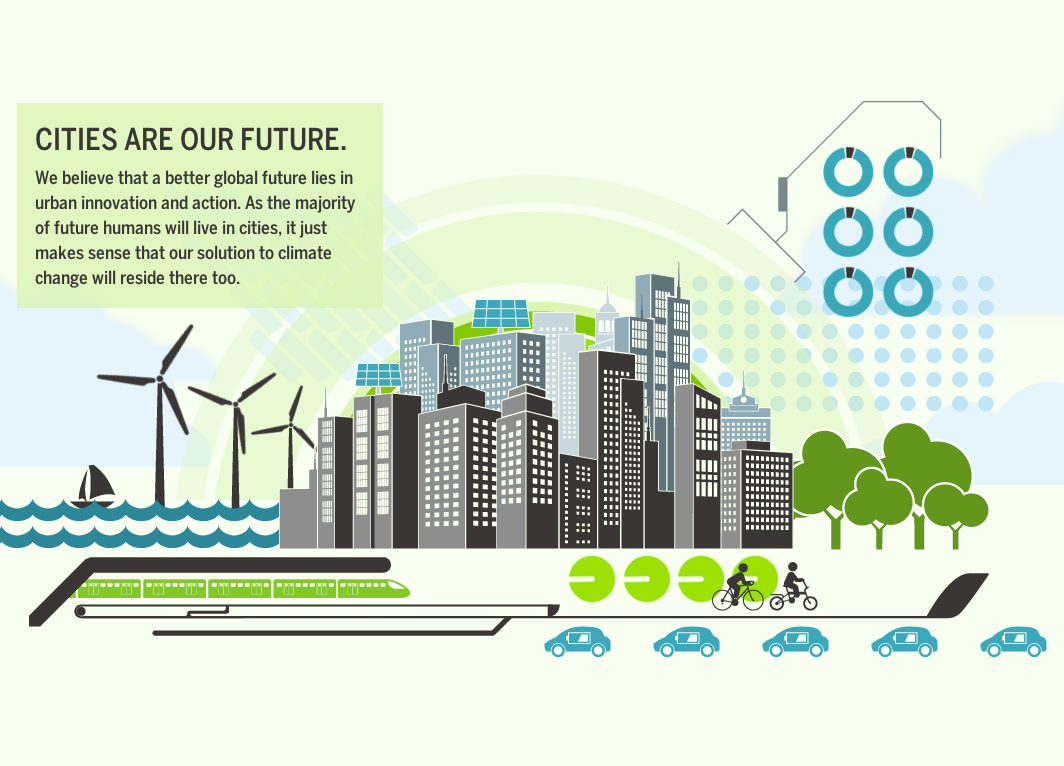 This is a gorgeous infographic. Go look at it. Scroll through. Savor. Appreciate the design — but pay attention to the point.
This is a gorgeous infographic. Go look at it. Scroll through. Savor. Appreciate the design — but pay attention to the point.
The presentation is by C40, a group of 58 cities that work together to share information and best practices about addressing climate change. (Here’s previous Grist coverage of the group.) Key points from the presentation, quoted directly:
- Almost 50 percent of cities are already dealing with the effects of climate change, and nearly all are at risk.
- Over 90 percent of all urban areas are coastal, putting most cities on Earth at risk of flooding from rising sea levels and powerful storms. [In fact, that process has already begun.]
- Larger cities have a ravenous appetite for energy, consuming 2/3 of the world’s energy and creating over 70 percent of global CO2 emissions.
- Today, over 4,700 climate change actions are in effect in the nearly 60 Cities of the C40, with almost 1,500 further actions under active consideration.
That’s a remarkable collection of data that reinforces a point that won’t surprise any regular Grist reader: Cities both bear the brunt of climate change and are best positioned to address it.
A footnote. There’s another point made in the presentation:
- Unexpected expenditures from storms, flooding, snow removal and drought can lead to major disruptions in business operations and city budgets.
That one hits very close to home for the group’s current chairperson, New York City Mayor Michael Bloomberg. Just after Christmas in 2010, a major blizzard hit the city, knocking the city that never sleeps into a coma. As recently as last September costs from the city’s response were still adding up — and Mayor Bloomberg was still regularly facing criticism for the slow response from the city’s inadequate fleet of snowplows.
Preparing for climate change is vital for a variety of reasons. But for politicians, being unprepared can also kill a career.
In case they needed any other motivation.
Via The Atlantic Cities.



